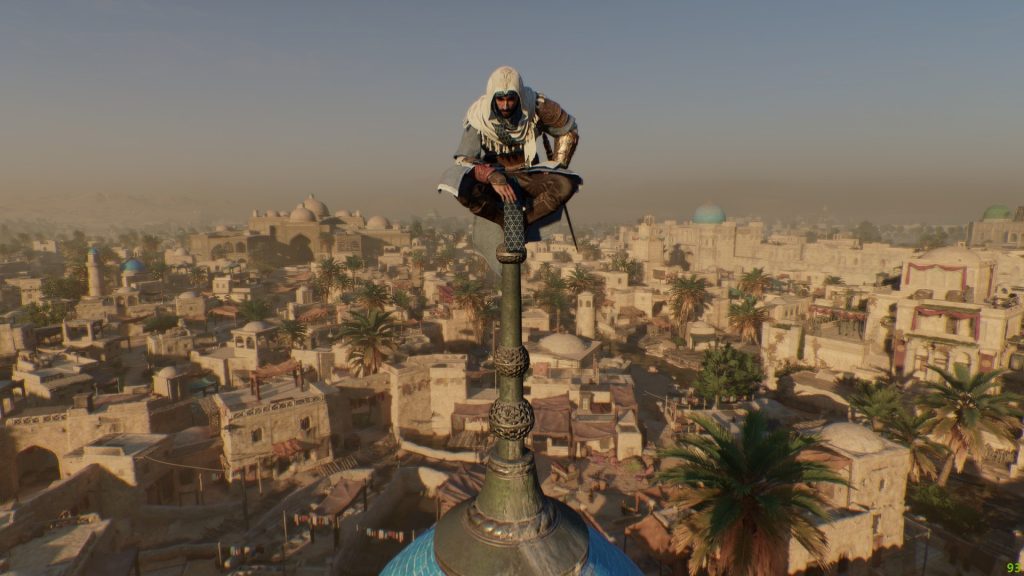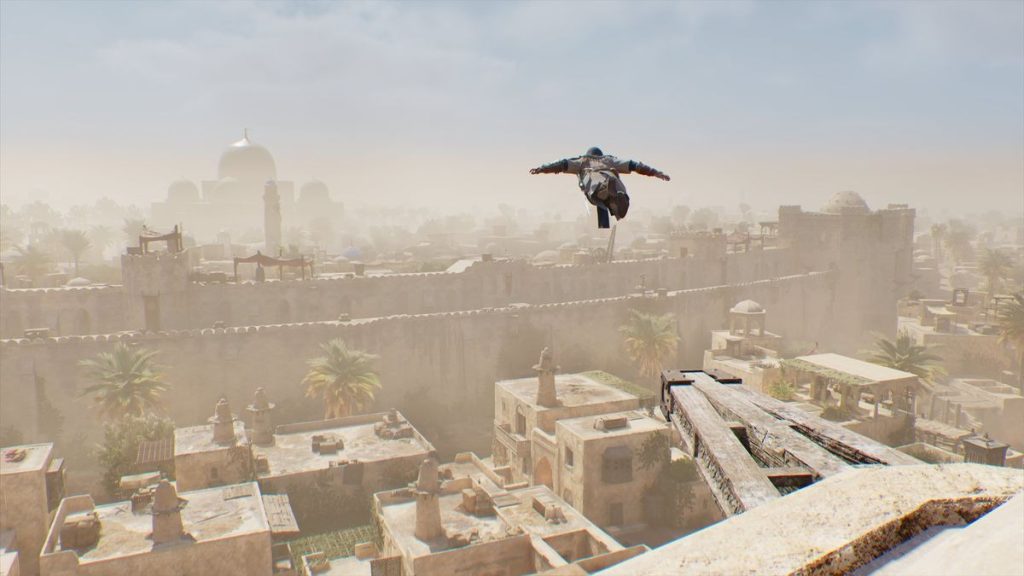Something old, something new.
After a three-year hiatus, Assassin’s Creed returns with Mirage. From a visual and technical point of view, the Ubisoft team has opted for a “less is more” approach. Powered by the afterst version of the Anvil engine, Mirage looks stunning, often due to the myriad of features it offers that are still not common in all games or engines, such as Real-time lighting systems that take into account the Time of day, global lighting effects, dense cities, vast landscapes and immense views with rich and colorful flora and fauna.

The bustling city of Baghdad and its narrow streets look authentic and have a strong artistic direction. Sandstone buildings and towering palm trees are interspersed with thick volumes of fog and twilight rays that obscure wide views. The same physics-based rendering materials and the mess packed in each place always impress, mixed with atmospheric diffusion, sandstorms and a day and night cycle. The number of NPCs and the entanglement of the world are also high, at least on the current generation consoles, mixed with the real-time and pre-rendered cutscenes that resist previous entries in the series.
A few small updates have arrived in Assassin’s Creed Valhalla and are here to stay, such as the motion blur per Pixel that improves the Action, although they are more advantageous in the 30fps modes. However, the basis of the engine is still firmly rooted in its last and greatest technical leap, which was Assassin’s Creed Unity. This leaves a beautiful, rich and dynamic world, proud of the afterst generation consoles, but on PS5, Xbox Series X, Series s and PC, the impact is not so extravagant.
Some negative aspects occur on the presentation front. I should mention the aggressive use of Chromatic Aberration that obscures the image, especially at lower resolutions. There are also poor quality textures, material reactions and sometimes rigid physics and movement in addition to obvious disturbances that can dull some of the anvil’s brilliance. It would be a lie to call it a bad game where cinematography and narration remain the strong points, as well as a living and lived world. But the roots of the last generation are more obvious than ever today, and it does not stand up to other purely new Gen games like Horizon Forbidden West from a purely graphic and technical point of view.
The consoles of the current generation and, of course, the PC remain the best place to play, and that starts with resolution and performance. Dual modes are offered for the three machines of the current generation, and the quality mode reaches a maximum of 30 fps, but it has a resolution of 3840 x 2160 locked according to all my accounts on PlayStation 5 and Xbox Series X. In addition, both consoles run identical visual settings in both modes, which means that we have a maximum.

The Performance mode, labeled high frame rate in the menu, changes the visual parameters little, most of the reductions being linked to the resolution. These include shadow resolution and depth of field quality, as well as a slight reduction in the level of detail of trees and grasses (LoD) and ambient occlusion (AO), which remains from a variety of screen spacings, as do smaller shadows and highlights. The real difference in this mode is that the frame rate now targets 60 fps, to the detriment of dynamic resolution scaling (DRS). We see a counted maximum of 3456x1944p, but a minimum of 2880x1620p can occur on both machines in dense areas – about 43% less than the Maximum of 2160p in quality mode. In practice, the reduction is relatively small for twice the frame rate.
The S-series tells a similar story. We see lower parameters for LoD, the quality of the shadows, the textures and perhaps the AO And screen space reflections, but the biggest reduction remains the resolution. The quality mode seems to use the DRS most often at 2880 x 1620p, but I also counted a slight scaling of 20% at 1440p. It still offers a sharp and crisp image at the same maximum 30 frames per second as the 4K quality mode. However, the reduction in performance mode is much more obvious, less than half the maximum quality, reduced to 1920x1080p, but the DRS is activated and gives us a counted depth of 1600x900p. a lower pixel density is attenuated by 2 times the frame rate, but the image is more unstable and softer, An Option to disable it would be beneficial.

Raising the anvil with a higher power
The performance of the game is often tied to the GPU when it is not overflowed with strong geometric drawings and NPC accounts. In large cities, it can be linked to the processor, which can lead to slight cracks on the two current generation Xbox Series consoles. It probably uses an adaptive v-Sync on PS5, but I didn’t find any range in my Tests. If you use the Xbox Series X and PS5 comparison in some heavier sections of Baghdad, the game has 60 frames per second locked when you enter the circular city, and that’s the majority of what you’ll see in this mode. Some slight tears and dips while flying like an eagle appear on the X series, as well as a little more dips of a single frame in the real-time cutscenes. But the Delta in the middle of them is less than 2% in favor of the PS5 and is probably linked to the processor most of the time if you do.

